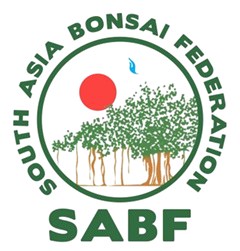
Bonsai Care Information
Bonsai is a miniaturized tree in a flat pot. Maintaining a bonsai is a commitment – very much like keeping a pet – as it will need regular attention. It will need water and nutrition suppliments, it will require trimming every few months, it will need to be repotted after a certain period and it will need to be provided with appropriate environmental conditions if it is to survive and grow well for a long time. Your bonsai may be semi-trained or a fully matured tree or self made during your class/workshop training; unless otherwise specified it will probably belong to a specie native to your own climatic conditions and therefore it will mostly be fairly easy to maintain. Nevertheless, it will be necessary for you to know a few things about it’s routine maintenance. Here are a few guidelines:
1. Location: Place the bonsai on a raised bench in either a terrace / garden or or on the parapet balcony or keep it on a windowsill but always at a place where it will receive direct sunlight for atleast two hours daily but preferably for the major part of the day. Although it can occasionally be brought indoors to be shown off in your home, it should normally be placed where it will get direct sunlight.
2. Watering: A bonsai should usually be watered thoroughly once a day, preferably in the early part of the day. A watering can or a hose pipe with a rose shower or pour water with a vessel, always taking care to soak the entire visible surface of the soil ensuring that the entire rootball is thoroughly wet. It might be better if the pot is dunked into a basin or tub of water once a week till bubbles rise from the soil surface; this will ensure that none of the roots become dehydrated.
3. Pruning: Since a bonsai is basically a living, growing plant, it will be necessary to prune or clip it from time to time. If the bonsai is semi-finished or fully trained it will already have a defined shape and under the circumstances all that will be required in all probability, will be maintaining it’s original shape. To do this, just pinch the shoots/tips which grow out of the periphery of or if they are deviating from its original shape as and when the shoots extend at the beginning of the growing season, by either pinching the growth between the forefinger and thumb or clipping it with a pair of sharp scissors. If, for some reason this is not done in time, the overgrowth on the bonsai may have to be pruned back at a later date using slightly stronger scissors. During spring or other growing season when growth is more vigorous, heavier pruning may be necessary; but if pinching is done in time and properly, heavy pruning may not be necessary or may be minimal. A bonsai will look like a tree only when it’s shape is maintained to look like a tree. After heavy pruning it may look somewhat bare, but née buds and shoots will generally sprout after about 10 days after pruning.
4. Fertigation: It is desirable to provide the bonsai with external nutrients. The fertilizers generally are Nitrogen, Phosphorus and Potassiom represented by N,P & K plus micronutrients. A number of water soluble solid/liquid fertilizers are available in the market. Any brand will do, provided the dosage is diluted to not more than half the recommended strength prescribed on the manufacturers’ label. It will also be preferred to remain consistent in the schedule of fertilizing. Generally speaking, the fertilizers can be administered dissolved in water at not more than once every month, but the frequency can be increased to once every fortnight during the growing seasons. To be on the safer side it is advisable to drench the foliage and soil ball with water before any fertilizers are applied. It is also possible to use unbranded solid chemical fertilizers such Urea, Muriate of Potash, Super Phosphates, etc., but the risk of an overdose is higher, unless the grower is familiar with their use. It is better to stick to half strength liquid fertilizers which can be leached out with water if there is an accidental overdose. Nowadays, slow release fertilizers are available and are safer to use as the overdose factor is ruled out due to its slow release characteristics.
The above guidelines cover all the basic aspects needed to maintain even a modest collection of bonsai. There are certain additional aspects that a grower should be aware of:
a) Whether a bonsai is fully or semi trained or ix still under initial training, it will probably have training wire wrapped on some of its branches or even the trunk. It makes sense to regularly check whether the wire is becoming too tight and whether it is biting into the bark. If that is the case, the wire will have to be removed by unwrapping or cutting off in little bits; it is fairly easy provided the right tools are used. If required, wire can be re-wrapped after a few days.
b) It is not advisable to attempt to unpot/ repot a bonsai other than during it’s season of active growth. Spring is generally considered the universal growing season in all climatic conditions and is therefore the best season to repot most plant varieties. Novices will be better off doing this activity under expert supervision.
Good, well drained substrate or soil with coarse particles of good tensile strength for aeration as also organic content for moderate water retention and initial nutrition is recommended. Proper maintenance and general horticultural care of bonsai are essential for their good health and growth.
1. Location: Place the bonsai on a raised bench in either a terrace / garden or or on the parapet balcony or keep it on a windowsill but always at a place where it will receive direct sunlight for atleast two hours daily but preferably for the major part of the day. Although it can occasionally be brought indoors to be shown off in your home, it should normally be placed where it will get direct sunlight.
2. Watering: A bonsai should usually be watered thoroughly once a day, preferably in the early part of the day. A watering can or a hose pipe with a rose shower or pour water with a vessel, always taking care to soak the entire visible surface of the soil ensuring that the entire rootball is thoroughly wet. It might be better if the pot is dunked into a basin or tub of water once a week till bubbles rise from the soil surface; this will ensure that none of the roots become dehydrated.
3. Pruning: Since a bonsai is basically a living, growing plant, it will be necessary to prune or clip it from time to time. If the bonsai is semi-finished or fully trained it will already have a defined shape and under the circumstances all that will be required in all probability, will be maintaining it’s original shape. To do this, just pinch the shoots/tips which grow out of the periphery of or if they are deviating from its original shape as and when the shoots extend at the beginning of the growing season, by either pinching the growth between the forefinger and thumb or clipping it with a pair of sharp scissors. If, for some reason this is not done in time, the overgrowth on the bonsai may have to be pruned back at a later date using slightly stronger scissors. During spring or other growing season when growth is more vigorous, heavier pruning may be necessary; but if pinching is done in time and properly, heavy pruning may not be necessary or may be minimal. A bonsai will look like a tree only when it’s shape is maintained to look like a tree. After heavy pruning it may look somewhat bare, but née buds and shoots will generally sprout after about 10 days after pruning.
4. Fertigation: It is desirable to provide the bonsai with external nutrients. The fertilizers generally are Nitrogen, Phosphorus and Potassiom represented by N,P & K plus micronutrients. A number of water soluble solid/liquid fertilizers are available in the market. Any brand will do, provided the dosage is diluted to not more than half the recommended strength prescribed on the manufacturers’ label. It will also be preferred to remain consistent in the schedule of fertilizing. Generally speaking, the fertilizers can be administered dissolved in water at not more than once every month, but the frequency can be increased to once every fortnight during the growing seasons. To be on the safer side it is advisable to drench the foliage and soil ball with water before any fertilizers are applied. It is also possible to use unbranded solid chemical fertilizers such Urea, Muriate of Potash, Super Phosphates, etc., but the risk of an overdose is higher, unless the grower is familiar with their use. It is better to stick to half strength liquid fertilizers which can be leached out with water if there is an accidental overdose. Nowadays, slow release fertilizers are available and are safer to use as the overdose factor is ruled out due to its slow release characteristics.
The above guidelines cover all the basic aspects needed to maintain even a modest collection of bonsai. There are certain additional aspects that a grower should be aware of:
a) Whether a bonsai is fully or semi trained or ix still under initial training, it will probably have training wire wrapped on some of its branches or even the trunk. It makes sense to regularly check whether the wire is becoming too tight and whether it is biting into the bark. If that is the case, the wire will have to be removed by unwrapping or cutting off in little bits; it is fairly easy provided the right tools are used. If required, wire can be re-wrapped after a few days.
b) It is not advisable to attempt to unpot/ repot a bonsai other than during it’s season of active growth. Spring is generally considered the universal growing season in all climatic conditions and is therefore the best season to repot most plant varieties. Novices will be better off doing this activity under expert supervision.
Good, well drained substrate or soil with coarse particles of good tensile strength for aeration as also organic content for moderate water retention and initial nutrition is recommended. Proper maintenance and general horticultural care of bonsai are essential for their good health and growth.
